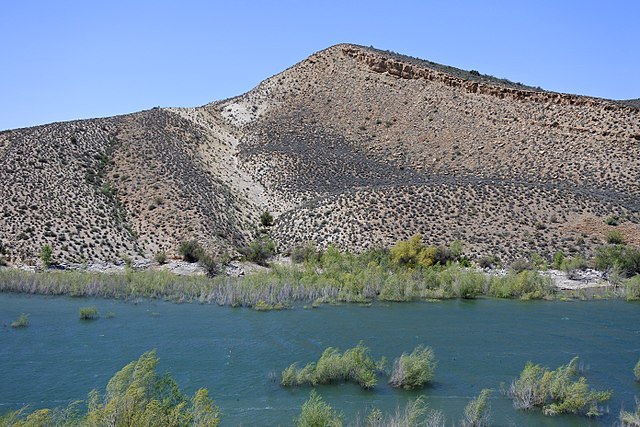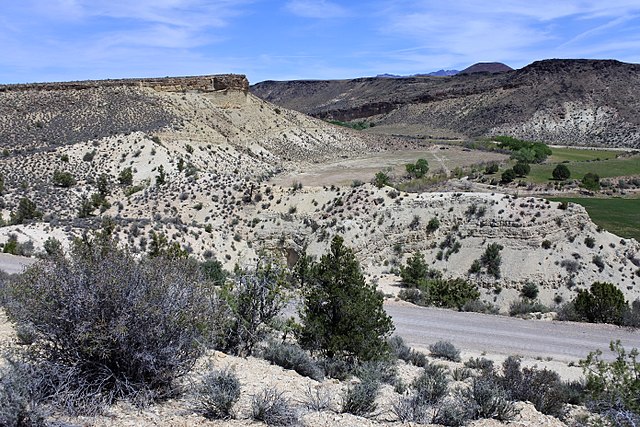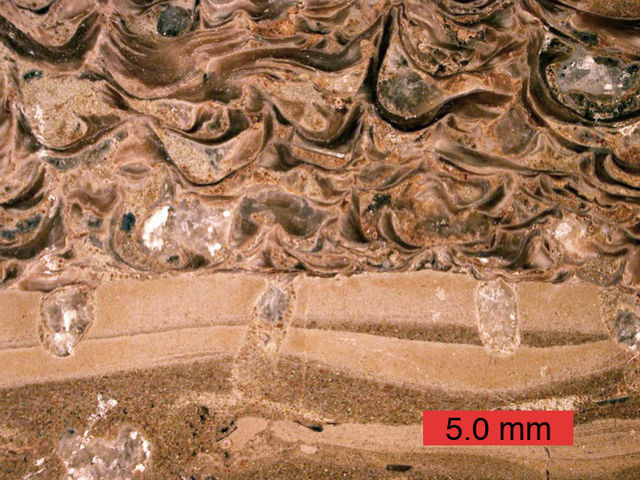The Carmel Formation is a geologic formation in the San Rafael Group that is spread across the U.S. states of Wyoming, Utah, Colorado, north east Arizona and New Mexico. Part of the Colorado Plateau, this formation was laid down in the Middle Jurassic during the late Bajocian, through the Bathonian and into the early Callovian stages.
Carmel Formation exposed at Gunlock Reservoir, southwestern Utah
Carmel Formation near Gunlock, Utah. The unconformably overlying dark unit is the Upper Cretaceous Iron Springs Formation.
The Golden Throne, a rock formation in Capitol Reef National Park. Though the park is famous for white domes of the Navajo Sandstone, this dome's color is a result of a lingering section of yellow Carmel Formation carbonate, which has stained the underlying rock.
Cross-section of a carbonate hardground encrusted by oysters and bored by bivalves (Gastrochaenolites)
The Navajo Sandstone is a geological formation in the Glen Canyon Group that is spread across the U.S. states of southern Nevada, northern Arizona, northwest Colorado, and Utah as part of the Colorado Plateau province of the United States.
A prominent cuesta of Navajo Sandstone rims the edge of the San Rafael Swell in eastern Utah
The Permian through Jurassic stratigraphy of the Colorado Plateau area of southeastern Utah that makes up much of the famous prominent rock formations in protected areas such as Capitol Reef National Park and Canyonlands National Park. From top to bottom: Rounded tan domes of the Navajo Sandstone, layered red Kayenta Formation, cliff-forming, vertically jointed, red Wingate Sandstone, slope-forming, purplish Chinle Formation, layered, lighter-red
The Great White Throne in Zion National Park is an example of white Navajo Sandstone
Stevens Arch, near the mouth of Coyote Gulch in the Canyons of the Escalante, is formed from a layer of Navajo Sandstone. The opening is 220 feet (67 m) wide and 160 feet (49 m) high.








